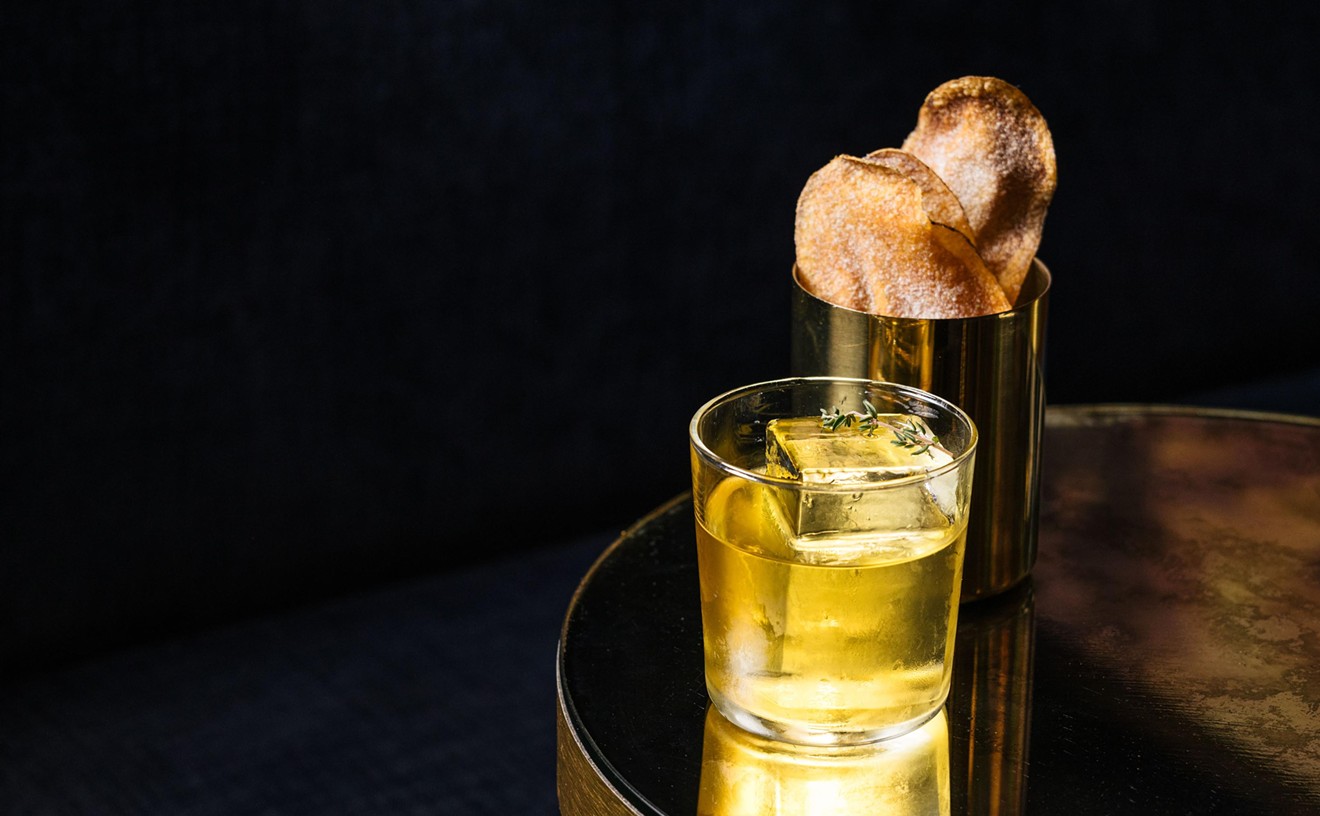For a refreshing dish of the coastal variety, it's hard to beat Peruvian-style ceviche.
Even at its most basic, the South American country's popular staple of raw fish marinated in lime juice is nothing short of tart and spicy satisfaction, the best ones so fresh they taste as if they've tumbled right out of the sea. A few bites in and you can see why ceviche has its own national holiday in Peru.
Oscar Graham, chef and owner of Tumi Fine Peruvian Cuisine in Chandler, makes very good ceviche. His ceviche de pescado features a mound of chopped pieces of white-flesh tilapia in a thin, bracingly sharp and spicy juice of lime and Peruvian chile peppers, topped with slivers of red onion and served with a soft hunk of sweet potato and a quarter-ear of pearly, large-kernel Peruvian corn. There also is shrimp ceviche, a fish, scallop, squid, mussel, and octopus ceviche and, if you ask nicely, fish tiradito, a cousin of ceviche, in which Graham slices tilapia into long, thin pieces and holds the onions.
"I like adding cancha to my ceviche," says front-of-the-house manager and Lima-born Franklin Foronda of the addictively salty and toasted corn nuts that are complimentary at Tumi. "They make it more delicious."
Graham opened Tumi, named after the Incan knife and national symbol of Peru, in February 2012 in a Chandler strip mall near the intersection of Warner and Alma School roads. Although it's the first restaurant he's owned, Graham, who was born and raised in Lima, has been cooking Peruvian food in the States for over 30 years, first in California and then, starting in 2010, in the Valley, where Graham worked on and off at now-defunct Contigo Peru in Mesa.
At the tiny Tumi, Graham mixes his knowledge of Peruvian cooking with the cuisine of the country: a fusion of the indigenous Inca with influences from its Spanish, Asian, Italian, French, and African immigrants utilizing ingredients such as potatoes, chile peppers, and limes.
"You can eat ceviche in every city in Peru and they all have a different flavor," Foronda says. "Here, we make our dishes the way they would in Lima — from the coast."
Not all of Graham's traditional Peruvian dishes are stellar — some simply fail to excite — but if you're in the area (and especially if Foronda's on the floor to direct you to the ones Graham does best), the place is worth a visit.
Some of the most unique dishes of Peruvian cuisine can be had as appetizers. And thankfully, at Tumi, trying them for the first time or indulging in a few of your favorites means not having to commit to just one.
Ask for the off-menu sampler and you'll be treated to a fantastic Peruvian foursome. There are anticuchos, two street-food skewers of lightly vinegary and spicy, cumin-kissed pieces of beef heart, and a single papa rellena, an oblong on-the-go snack of creamy and golden-fried potato dough stuffed with seasoned ground beef, hard-boiled egg, onions, olives, and raisins. Also on the plate are two starchy offerings of papa a la Huancaina (potatoes Huancayo-style), thick boiled slices of potatoes served cold and smothered in an intensely yellow, spicy, and creamy cheese sauce for a kind of picnic-style potato salad by way of Peru, and the light and airy causa rellena de pollo, a delicate, cake-like creation of two, oval discs of molded and cold yellow mashed potatoes seasoned with lime and aji peppers and layered with a creamy chicken salad.
Although the restaurant's absence of a liquor license disappoints the natural inclination to wash down the tongue-tingling flavors of the food with a frosty beer, you could do just as well with a glass of dark, sweet, cinnamon-tinged chicha morada (Peruvian purple corn juice) or maracuya (passion fruit juice).
If you're in the mood for more of the ocean's bounty at Graham's cevicheria, several other seafood-centered items can help to continue the journey.
Skip the surprisingly bland Peruvian-style fried rice with shrimp and move on to the mildly flavored mariscos al aji amarillo, a colorful dish of fish, octopus, shrimp, squid, and scallops studded with peas and red peppers in a sauce of yellow chiles or, better yet, the livelier pescado a lo macho, in which the seafood medley is coated in a spicy orange sauce and spooned over a hunk of lightly fried tilapia for a bolder taste with a bit of crunch. The best of the seafood bunch, however, may be Graham's arroz con mariscos, the Peruvian version of paella. Combining three favorites of the country — seafood, rice, and chile peppers — this filling and spicy creation also makes use of Parmesan cheese to bring together the flavors of its lobster, shrimp, scallops, and mussels. Plus, the portion size is generous enough for two to enjoy.
Given Graham's very good interpretations of some of Peru's most popular dishes, you could hardly be blamed for sticking with the obligatory classics at his restaurant.
There is the comforting, stew-like aji de gallina, featuring strips of chicken in a somewhat spicy sauce of milk, bread, Parmesan cheese, chiles, garlic, and nuts; lomo saltado, the popular Peruvian and Chinese fusion dish made with tender slices of beef stir-fried with red onions, chiles, garlic, and tomatoes in a vinegary, sweet, and cilantro-kissed sauce delectably sopped up by its foundation of fries; and excellent pollo a la brasa, or Peruvian grilled chicken. Graham's version, marinated for 24 hours and made with more than 20 ingredients — including dark beer, soy sauce, chile peppers, rosemary, and cumin — before taking a spin in the rotisserie oven, is pretty much perfect. Order it up with the standard salad and fries and forget your table manners — this fowl is traditionally eaten with the hands.
For dessert, why not a dish of coral-colored ice cream made from the Peruvian tropical fruit lucuma that tastes like a marriage of pumpkin and caramel, or four of the deep-fried and delicately crisp Peruvian doughnuts called picarones drizzled in a sweet and fruity syrup. Perhaps, if you're with guests, a serving of each.
Tumi is probably more casual than what you might expect from a restaurant where some of the entrées reach the $18 mark. The small, fluorescent-lit room holds a handful of neatly assembled buffet-style tables and chairs atop a tiled floor with a few accents of Peruvian artwork and photographs on its basic white walls. A television in the corner is usually tuned to a soccer match, and just behind it is a window to the kitchen, where Graham can be seen bustling about or handing plates to friendly, but sometimes English-language-challenged servers. A fact that Foronda says, because the majority of Tumi's customers are American, can be a challenge.
"There are many people from Mexico who visit the restaurant and think our ceviche will be like theirs," he says. "But I tell them Peruvian ceviche is different, better, and that they will love it. They always do."










